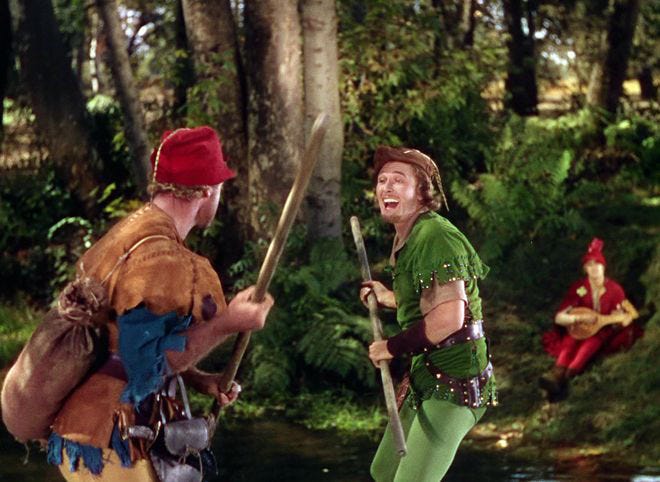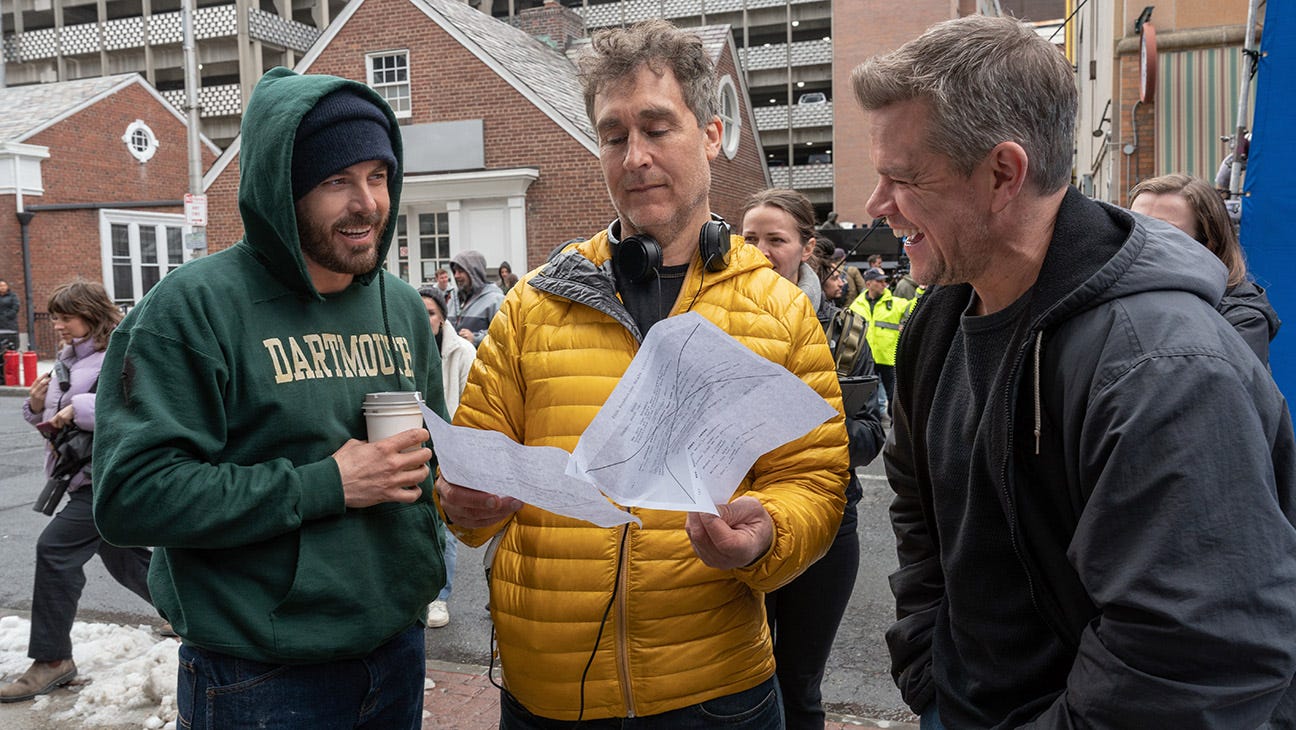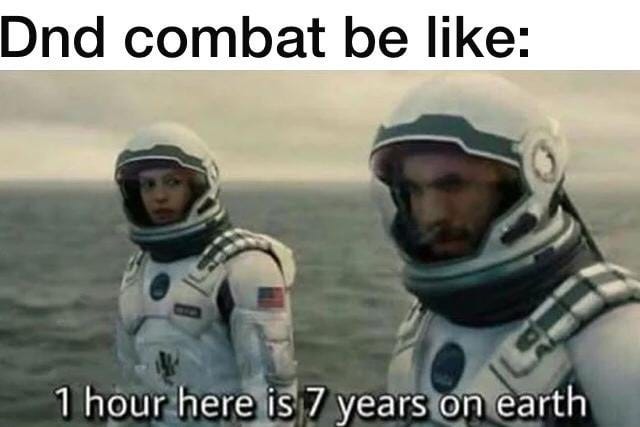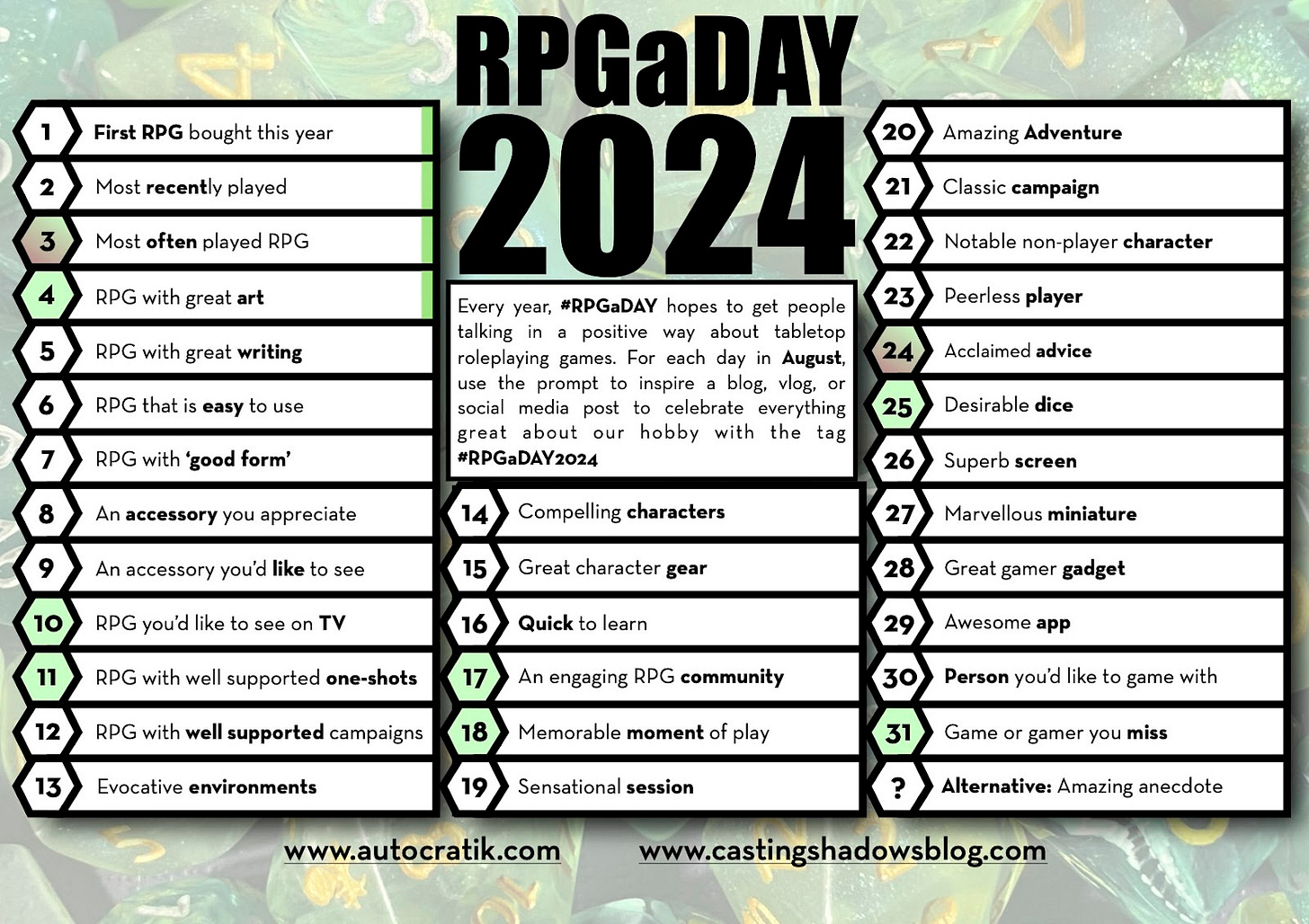In Defense of Nostalgia
One of my favorite independent films is Noah Baumbach’s Kicking and Screaming. Released in 1995, I think it fills an interesting narrative space in the development of how Hollywood presents narratives. To borrow a concept from Thomas Kuhn regarding the nature of science and the structure of it’s revolutions, Hollywood has eras of storytelling that fit within definable paradigms. The Hollywood era dominated by the films of Frank Capra and Preston Sturges told certain kinds of stories. The film makers of the late 60s and early 70s told very different stories, but like the films of Capra and Sturges films like The Taxi Driver and Saturday Night Fever shared structural and thematic elements.
These paradigms extend beyond genre and in a way provide the boundaries for films of every genre. The reasons for this are quite simple, as much as Hollywood talks about wanting to push boundaries they are extraordinarily conservative financially. Distributors want to make money and that means making what audiences will buy and while past performance may not guarantee future success, duplicating what works is a solid strategy until the next paradigm shift.
What makes me like Kicking and Screaming so much is that it is a film that it fills an interesting space during a transitional period between paradigms. Narratively, the film shares elements with 80s films like The Breakfast Club, The Lost Boys, and The Sure Thing while at the same time sharing elements with films like Can’t Hardly Wait and She’s All That. All of these are films about teens or college students at periods of transition, but there is a haunting nostalgia in Cant’ Hardly Wait and She’s All That that are lacking in the 80s film. In part it is because these 90s films are filmic representations of nostalgia for the films of the 80s. What Kicking and Screaming does is hang a lantern on this nostalgia. It is a film commenting on how Generation X experiences nostalgia in a different way than earlier generations. It’s a generation that is “nostalgic for conversations they had yesterday” and when that generation started making films, they were filled with nostalgia.
Which brings me to the thing I actually wanted to highlight with this introduction, the Retro Recipes channel by Perifractic (aka Christian Simpson). His channel started as a kind of typical “watch me fix old Commodore 64s” channel, like many other interesting channels in the retrocomputing space, but it eventually shifted into an exploration of the reasons why anyone would be interested in fixing old Commodore 64s in the first place. That reason is nostalgia for playing games on the system, alone and with friends. Retro Recipes is no longer a channel about retrocomputing, though he still engages in that from time to time, instead it’s a channel dedicated to nostalgia and recapturing childhood. One of the best examples of this shift is Perifractics recent visit to Universal Studios to see if the lot still had any evidence that the Clock Tower from Back to the Future existed, or if changes to the lot had forever removed the façade.
Perifractic isn’t nostalgic for yesterday, but his brand is getting choked up with nostalgia for his childhood and I love watching his show.
Weekly Film Article Cavalcade
The Lamentations of Luke Y. Thompson
As regular readers know, Luke Y Thompson’s journalistic beat covers more than film reviews. He’s also a long time action figure reporter and covers the beat for SuperHeroHype. In his latest article, he covers Hasbro’s upcoming Marvel action figure releases which includes ROM, a fan favorite who has lurked in Limbo for some time.
On the film review side of things, Luke has reviewed the two “Snyder-Cut” versions of Zack Snyder’s Netflix distributed Rebel Moon movies. Luke’s review is positive, but not gushing, and covers how when Snyder is in full Snyder mode he delivers what his fans expect. I’m of about 19 minds regarding the Rebel Moon movies. One the one hand, I’m always in the mood for another Seven Samurai update.
The “small town needs help and a small band of heroes is recruited to save them” is a strong premise for a film. The first “official” filmic version of this narrative might be Akira Kurosawa’s classic The Seven Samurai, but it’s one that echoes Robin Hood’s recruitment of his Merry Band in Michael Curtiz’s The Adventures of Robin Hood. The scene where Robin “recruits” Little John, and the overall arc of Curtiz’ version of the film, align with the trope and it’s one that comes up in mythology as well when Jason recruits his Argonauts. This is not to detract from the originality of Kurosawa’s vision, rather to establish why I like it when film makers use this trope. It oozes the heroic narrative to me.
So that’s one of the “love” parts of my relationship with Snyder’s film. One of the hate parts is how drawing from this trope clashes with the way that Snyder pulls from Foundation and Warhammer 40K. His mix in this regard seems a bit off. I’m all for grim dark science fiction with pseudo-fascist antagonists in a universe without hope, but that’s the exact opposite vibe as The Seven Samurai. The heroic band trope is…well…heroic and that is at odds with grim dark sensibilities. Certainly it can be done, and Dan Abnett manages it frequently, but Snyder doesn’t seem up to the task.
Courtney Howard’s View from the Center Seat
I often joke that every screenwriter has a heist story on the back burner that should never be written and should certainly never be produced as a film. The joke is a reference to Chevy Chase’s character in Funny Farm, who is attempting to write his ideal heist story which also happens to be cliché and uninspired. Watching that movie, and I’ve watched it many times, helped to keep me humble when I imagined writing my own heist movie Last Stop Disneyland. It’s a terrible heist concept I came up with while working at a bank in Reno that involves a “perfect” bank robbery and drive on the lonely Nevada highways afterwards. Needless to say, bad things happen to the main characters and no one actually makes it to Disneyland. It’s an absurdist comedy that I’ve already talked too much about because my inner bad idea advocate is recommending I write it again.
“Shut up, Doug!”
Oh, my bad idea advocate is named Doug. No reason why, just to give a persona to say shut up to.
Anyway, based on Courtney Howard’s latest review of The Instigators over at FreshFiction.tv, it looks like Casey Affleck should have left his heist idea unwritten because not even working with Matt Damon and Doug Liman could salvage it. Let me put it this way. If I was to choose a director who I thought could make Last Stop Disneyland work, it would be Doug Liman. From Swingers and Bourne Identity to Go, Edge of Tomorrow, and Suits, Liman has an ability to make movies look and feel COOL. Add to that the fact that Matt Damon and Casey Affleck are very good actors and you’ve got all of the technical requirements for a good movie. All you need is a good script, but Howard’s review makes it clear that this is a bad script. Given that it’s a heist movie, it was probably doomed from the start. Most heist movie ideas are terrible. I know it. You know it. Yellow Dog knows it and Yellow Dog doesn’t even know what town he lives in.
Mendelson’s Melodic Meanderings
and his podcast hosts discuss the success of Deadpool & Wolverine and a number of other issues in the latest podcast episode. I wish Scott would offer more content for non-subscribers, but his analysis is always worth reading/listening to.Glimpses from the Substackosphere and Bloggerverse
Is D&D Combat too long?
has an interview with Evan Diaz about the Nimble 5e game, a game that uses 5e as a launching pad but seeks to make game play faster an more intuitive.One of the things that highlights D&D’s history and how it was influence and inspired by wargaming is the combat system. Combats in D&D can be extremely time consuming affairs, especially if players and DMs end up engaging in a bit of analysis paralysis due to the vast number of choices available. Certainly, the combats are faster than GURPS, Champions, or Runequest, but those are games with explicit tactical emulation goals. D&D abstracts combat far more than those games and yet it can still take too long to finish a fight. I know that I cut my group’s last session short by about half an hour because I knew that if we started a combat, and one was pretty eminent, that we’d have needed about an hour and a half to play out a combat that lasted no more than 5 minutes of “game time.” Any attempt to streamline combat deserves a deeper look in my opinion. Check out the interview and consider checking out Nimble 5e.
What’s the most overused trope in video games?
When I saw the title of Geoffrey Golden’s most recent Equip Story blog post “All Video Game Characters Have Amnesia,” I initially thought it would be a discussion of how in games like Super Mario Bros. and other side scrolling games that the characters must have amnesia in order to finish their missions. After all, if Mario remembered all the times he died he might just give up his quests. As interesting as that conversation might have been, Geoffrey instead used it as an opportunity to discuss one of the best and worst used tropes in video games, actual amnesia. It was an interesting discussion and I recommend checking it out.
Experimenting with White Box D&D
Lately, I’ve been reading
as it discusses the author’s recent experiences running an OD&D campaign. When I say OD&D, I don’t mean a Basic/Expert experience or 1st Edition AD&D experience, I mean running a D&D game with the original little brown books. I’ve really been enjoying his insights and seeing how he adapts the rules as needs emerge in play. Of particular note were his articles on Gods and Clerica and his examination of the Original Thief Class.Thog discusses the origins of the Thief class and it turns out that I interviewed the creator of that class on my podcast back in 2020. Go ahead and check out the interview to get a little hint as to how the class as run at the old Aero Hobbies store in Santa Monica (now sadly closed) differed from what Gygax published.
Roleplaying Mass Effect
In a post that would make my daughter History demand that I immediately shift our group from playing D&D to playing Chaosium’s Basic Role Play,
’s most recent provides a personal hack of Mass Effect using Pulp Cthulhu as a framework. Since he eliminates the sanity rules and adds rules for moral valence, it’s more a BRP adaptation than a Cthulhu one but that’s a mere quibble from a Grognard at what is very stellar work.Adapting settings to one’s favorite role playing system is a tale as old as the hobby and it’s a noble one. I’ve mentioned a couple I’m working on and my 3d20 Marvel Super Heroes hack will be on the way shortly, and as will be seen in my weekly RPG recommendation I love it when other people do this. Ethan’s hack is free, so check it out if you want to play a Mass Effect RPG. BTW, he gets bonus points for linking other hacks of the setting.
Role Playing Game Recommendation
One of the interesting trends that happens in the role playing game design space is that a game will come out, gain a following, and immediately a lot of people will begin releasing “hacks” of that game adapting it to a variety of settings. This happens with games from big publishers and from small publishers. Do a google search for Cyberpunk 5e and you’ll find that someone did a fairly detailed adaptation back in 2015. Never mind the fact that the video game was based on a table top role playing game, meaning that there are already rules for the game, fans of 5e want a version using their favorite rules set. Similarly the Savage Worlds fan community makes a “savage” version of every game imaginable. I know because I’ve done it too.
For a while there, almost every thing under the sun was getting a “The Black Hack” version of the game. Now, everything seems to be getting a Mörk Borg version. This is in part due to the fact that both of these games have extremely permissive third person licenses that allow anyone to use the rules so long as they don’t claim any official endorsement. These games are following the trend started with 3rd Edition D&D and promoting the Open Gaming community.
Which brings me to this week’s recommendation. It’s a Mörk Borg hack called Star Borg by JP Coovert and Kyle Latino.
The game is currently only available to those who back JP Coovert’s Patreon, but like all his other productions it will be made available on his website in the future. Star Borg is an easy to learn and quick to play mash up of the Mörk Borg rules with Star Wars. Like many other “hacks,” there are some excellent official rules for Star Wars play ranging from the classic d6 version to the more recent Narrative Dice rules. All of those are great, but they have significant learning curve. They aren’t the kind of games that you can just pick up and play. They aren’t “beer and pretzels” role playing.
Star Borg is very much beer and pretzels role playing that manages to capture the feel of the Star Wars setting in a very tight rules set. The mechanics are simple. Roll a d20 and add your attribute (which ranges from -3 to +3) against a target number. If your result is equal to, or higher than, that number you succeed. Similar to Symbaroum, an absolutely beautiful RPG, all rolls are player driven. Players roll to hit and they roll to dodge. The only thing the GM rolls for is on the random tables to create the adventure for the evening.
It’s a super easy game to run and Coovert and Latino already have other designers making unofficial support materials. David Okum, who made the fun Save the Day game and draws a ton of paper miniatures, has written an Expanded Character Options book as well as a Galaxy Guidebook. For under $25, you can get a ton of great role playing goodness and I recommend jumping on the Star Borg, and JP Coovert, train.
RPGaDAY 2024 — Week 1
Every year, Dave Chapman (aka autocratik) puts together his RPGaDAY list in the hopes of getting people to talk about role playing games in a positive manner. Anyone who reads any social media, or watches the Tube of You, knows that there is a lot of negativity in any fan space and it seems dialed to 11 at times in the RPG space, so we are all in need of a little positivity. I’ll be updating my Weekly Geeklies with responses to his prompts all month and this post will include the first 4.
First RPG bought this year — Monsters! Monsters! 2.7 Edition I’m a big fan of Tunnels & Trolls, and Ken St. Andre’s games in general, and this was great way to continue my support for his products.
Most Recently Played RPG — Dungeons & Dragons 5e. I run a Dragonlance campaign for my daughters and their friends and we played on Saturday.
Most OFTEN Played RPG — Dungeons & Dragons in one form or another. It’s the “Common” language in the gaming space and I’ve played more of it than any other game by a longshot.
RPG with Great ART — Warhammer Age of Sigmar Soulbound from Cubicle 7 Entertainment. This game is absolutely beautiful and even though Brandon Sanderson is currently promoting a Cosmere role playing game, one that is too close to D&D 5e for my tastes as a “new” game, Soulbound is the system I would use to run a Stormlight Archive game.
Music Recommendations
This week’s music recommendations are inspired by Rick Beato’s YouTube page and his all too infrequent “Top 20 One Hit Wonders” lists. He recently did a list for the 2010s which got me to check out his list for the 2000s.
There were a couple of songs that I hadn’t heard in a while that I found myself wanting to listen to a couple of times in a row. The first was Nine Days song Absolutely (Story of a Girl). It’s a pleasant song that epitomizes the kind of songs that were prevalent in the early 2000s before we entered the modern era of “perfect” music where autotune and click tracks dominate productions. It’s nice to hear slightly flawed music again using real instruments.
Speaking of real instruments, Vanessa Carlton’s A Thousand Miles has a catchy basic piano melody at its core. Vanessa has a wonderful voice that falls squarely into the tradition of the Lilith Fair school of singer songwriters. I could easily imagine a concert featuring Vanessa Carlton, Lisa Loeb, Alanis Morrissette, Natalie Merchant, and Sarah McLachlan. In fact, I’d pay good money to go to that show.
But the catchy melody that fits within a pleasant musical tradition isn’t why I’ve been listening to/watching the Vanessa Carlton video on loop. No, it’s the the fact that the a portion of the video is filmed driving on the Angeles Crest Highway (aka The 2). I have so many fond memories of driving north from our apartment in Glendale into La Cañada onto “The 2” for a weekend drive and maybe a hike in the Angeles National Forest. I love my new home in Boise, and I love the hikes and countryside here, but I miss so much about Los Angeles. I miss my friends dearly and I miss the very much underrated natural environment that surrounds the city. From the sunny beaches to the snow capped mountains, it offers almost any environment you could wish for and this song has a nostalgic tone that matches the nostalgic imagery. And if you read my opening segment, you know I’m all about nostalgia.
Speaking of nostalgia, again, the Passenger song Let Her Go recently got an anniversary update featuring Ed Sheeran and I thought it was interesting to listen to the original and the nostalgic version.
Film Recommendation
I watch a lot of movies. In fact, I would argue that I compete with most movie critics for how many films I’ve seen and that includes a decent catalog of foreign films. In the early 2000s I went through a phase where I was looking to expand beyond my Hong Kong obsession into the larger East Asian film scenes. This led me to revisiting classic Japanese films like Tokyo Story and High and Low, but it also led me to start watching films from South Korea. This was before the big explosion of excellent action films. By the time The Host, Oldboy, and D-War hit the United States, I’d already watched quite a few South Korean films, but one has always resonated with me because it is an almost perfect romance.
I can’t remember whether I watched Il Mare because my (sadly deceased) friend David Chute recommended it to me or because it came up in one of my internet searches, but whatever the reason I was glad I found it. It is among my favorite romantic films and among my favorite “time travel” films. It’s right up there with About Time for how well it combines love and time travel. It’s a film about lovers who communicate with one other via a “magic mailbox” across time. The film’s trailer is pretty damn spoilery, but it gives a good sense of the haunting romantic tone of the film.
Critical snobs often assert that “the foreign version was better” about every film ever made whether it’s The Seven Samurai (sorry I prefer the Magnificent Seven even as I recognize how brilliant The Seven Samurai is) and Cousins has a charm for me that Cousin Cousine lacks and stands out as one of Joel Schumacher’s best films. But sometimes it’s not about which version is better or worse. Sometimes, like with The Seven Samurai and The Magnificent Seven, the films stand on their own as independently good.
I find that to be the case with The Lake House. It’s the American adaptation of Il Mare and it makes several changes to the main storyline, some for better and some for the worse. The dog that serves as a kind of “avatar of the god of time” for both films is better in the Korean version. It’s a cute dog in The Lake House, but it’s an absolutely adorable dog in Il Mare. Similarly, the use of the Jane Austen novel Persuasion as a glass slipper in The Lake House is a really nice touch. Both Il Mare and The Lake House are very well shot, which is good because both highlight the beauty of architecture and conveying that to an audience requires careful camera work.
The lake house in both films is what my friend would call “an architect’s house” because it’s all windows and architecture, as both my architect friend and these films tell us, is about light. I think that Keanu Reeves’ performance is nice and subtle in this film, but the real standout is Ebon Moss-Bachrach who plays Keanu Reeves’ brother in the film. He’s not in much of the film, but as they often say “there are no small roles, only small actors” and Ebon’s performance is anything but small. He provides a wonderful anchor for some significant emotional beats.
Critics of the film often have a hard time accepting the temporal premise of the films, but I find those criticism baseless. Yes, the communication across time is magical, but it isn’t without rules. The Lake House, in particular, goes out of its way to show the rules of how events in the past affect the future. Our protagonists are a bit outside of time. There connection allows them to remember the past before changes, a rule that is established when Keanu Reeves’ character plants a tree for Sandra Bullock’s character. It’s at a pivotal moment and it helps make the ending make sense.
Besides, this isn’t a film about how time travel works. This is a film about love and waiting and love being worth waiting for, and as a film about that it’s among the most underappreciated.















Thanks for linking the hack! When I was getting it situated for Substack, I considered just dropping the Pulp Cthulhu elements and having it be BRP but I didn't have enough time to go through Chaosium's SRD. As I continue to develop it, I would definitely like to make a more pronounced shift towards having it draw from the generic BRP rules.
Please do let me know if your group ends up trying it out! As I say in my post, I'm very much open to feedback from anyone who plays it. So far it's very player option-heavy as I have some more work to do for Game Commanders.